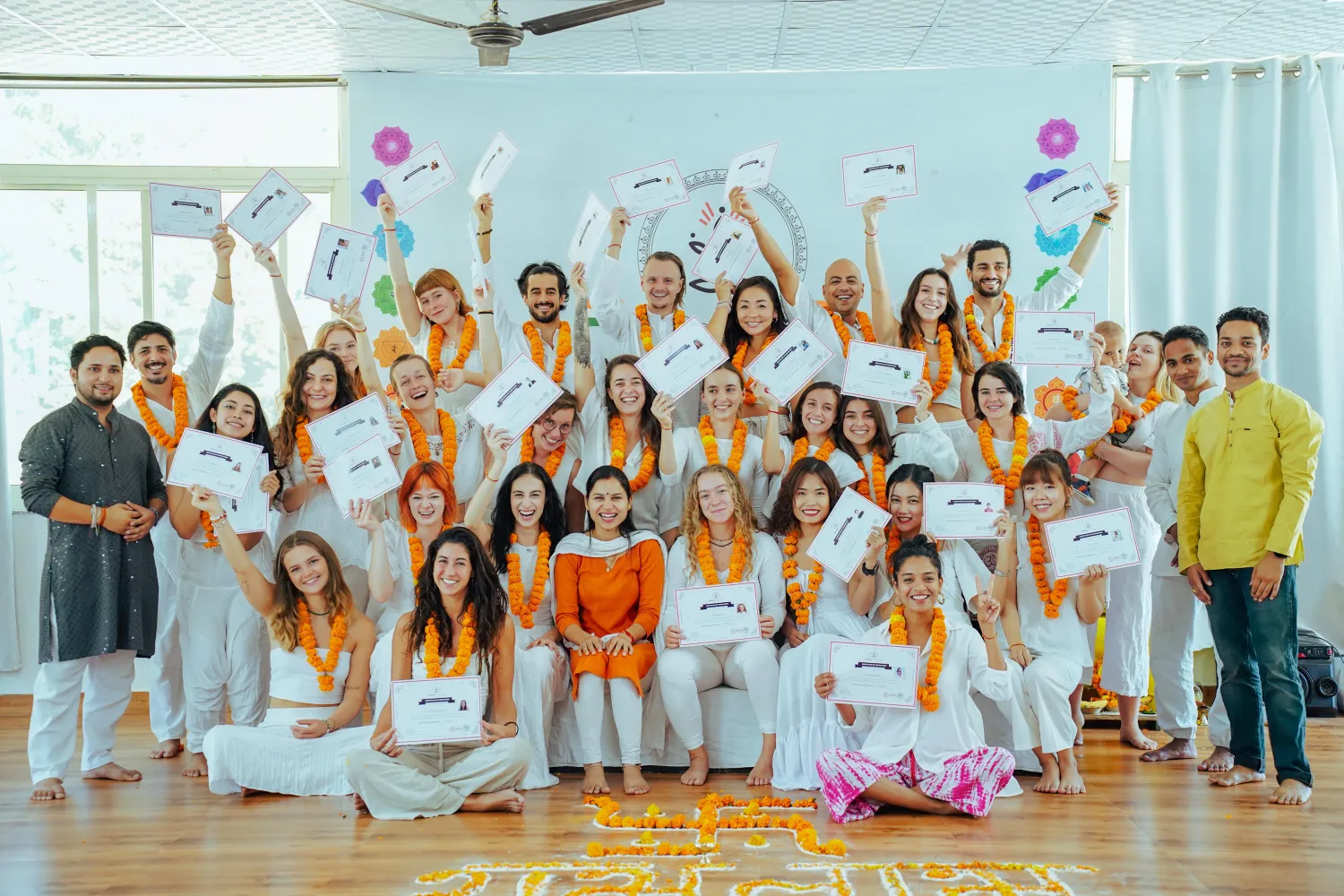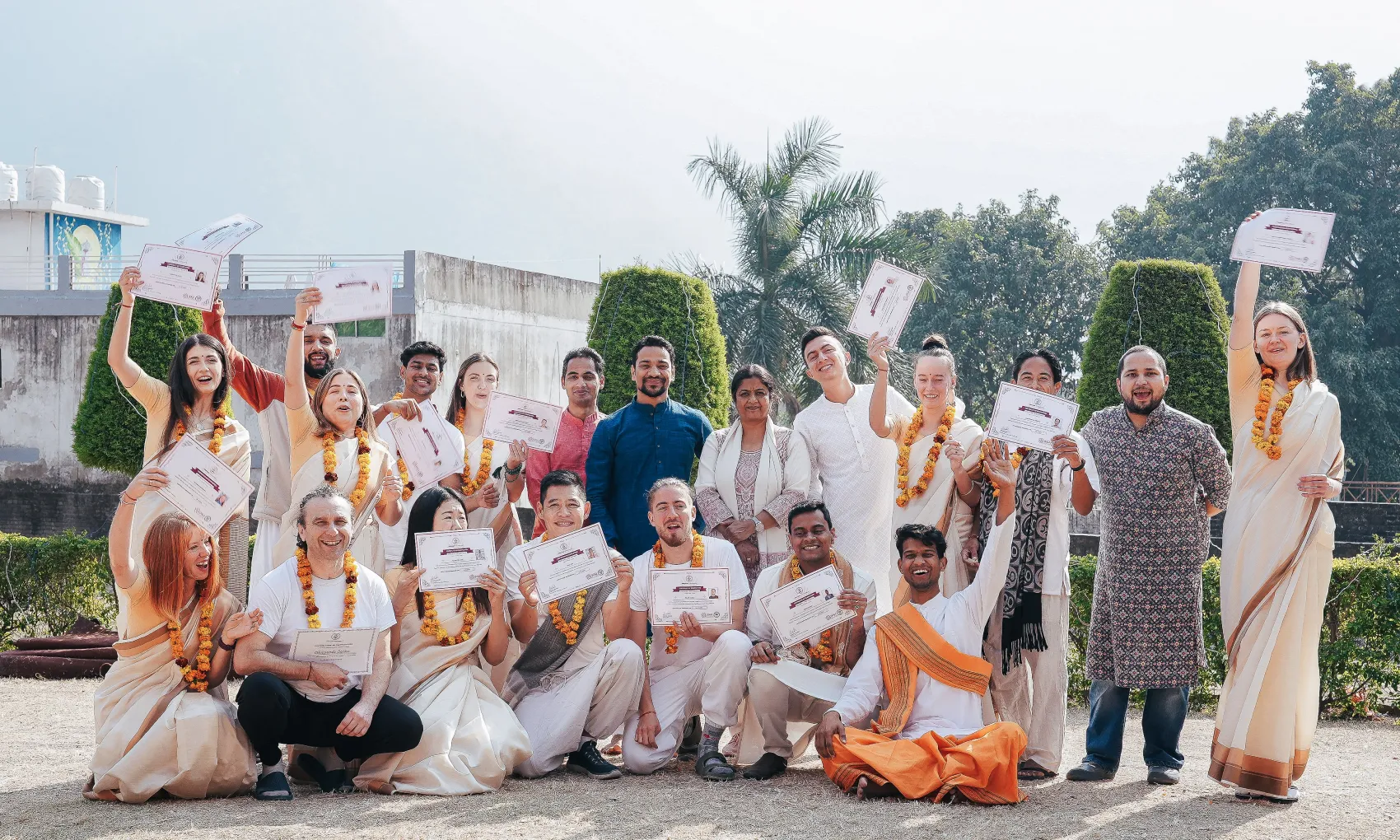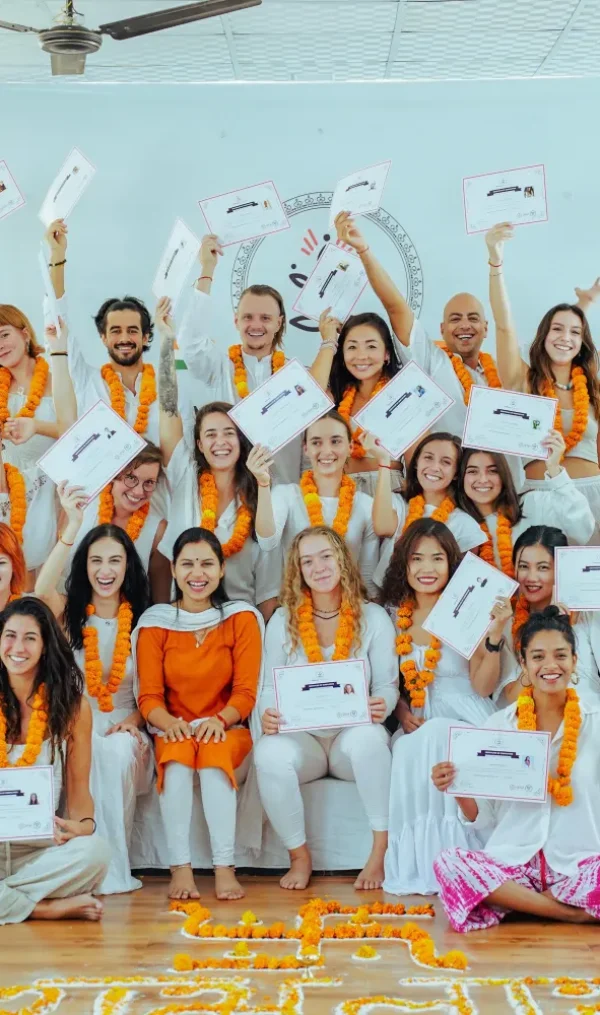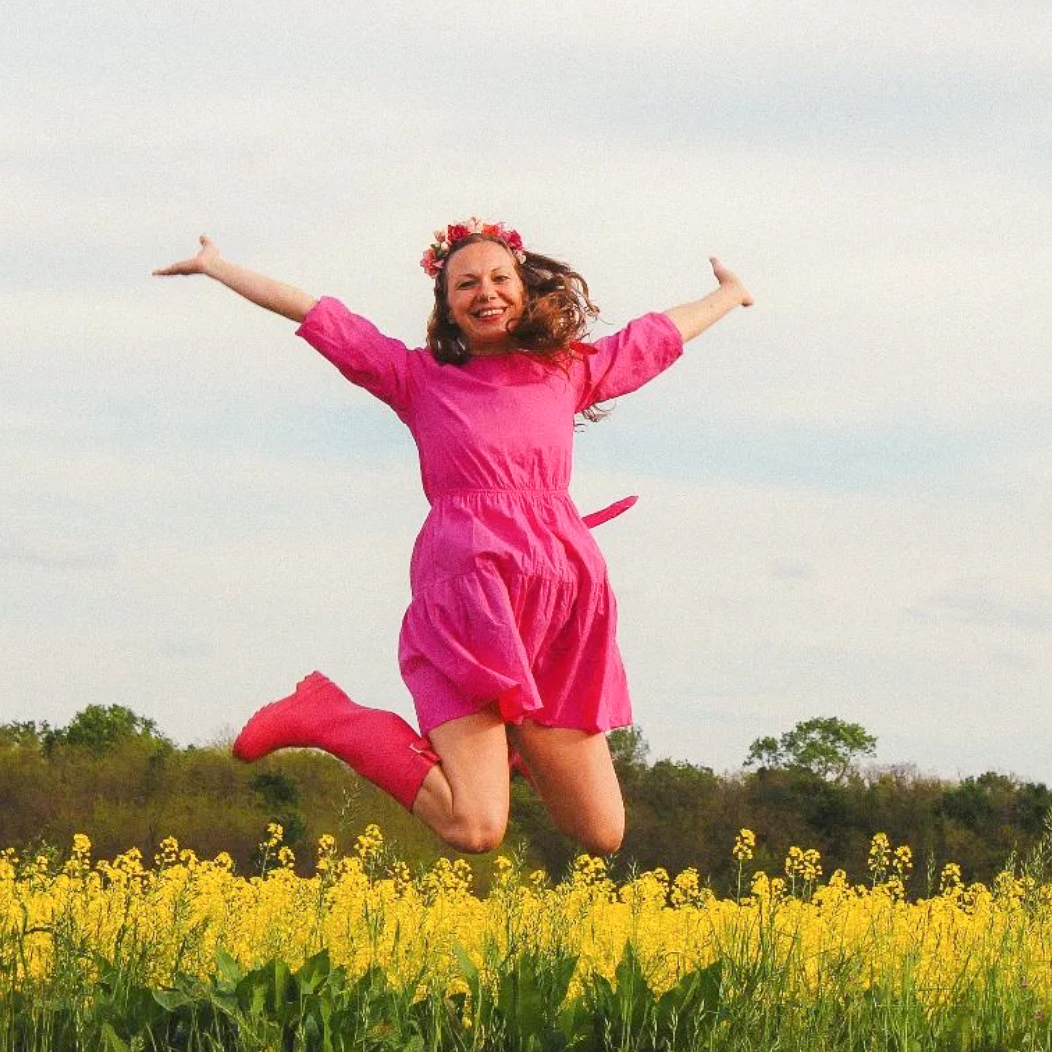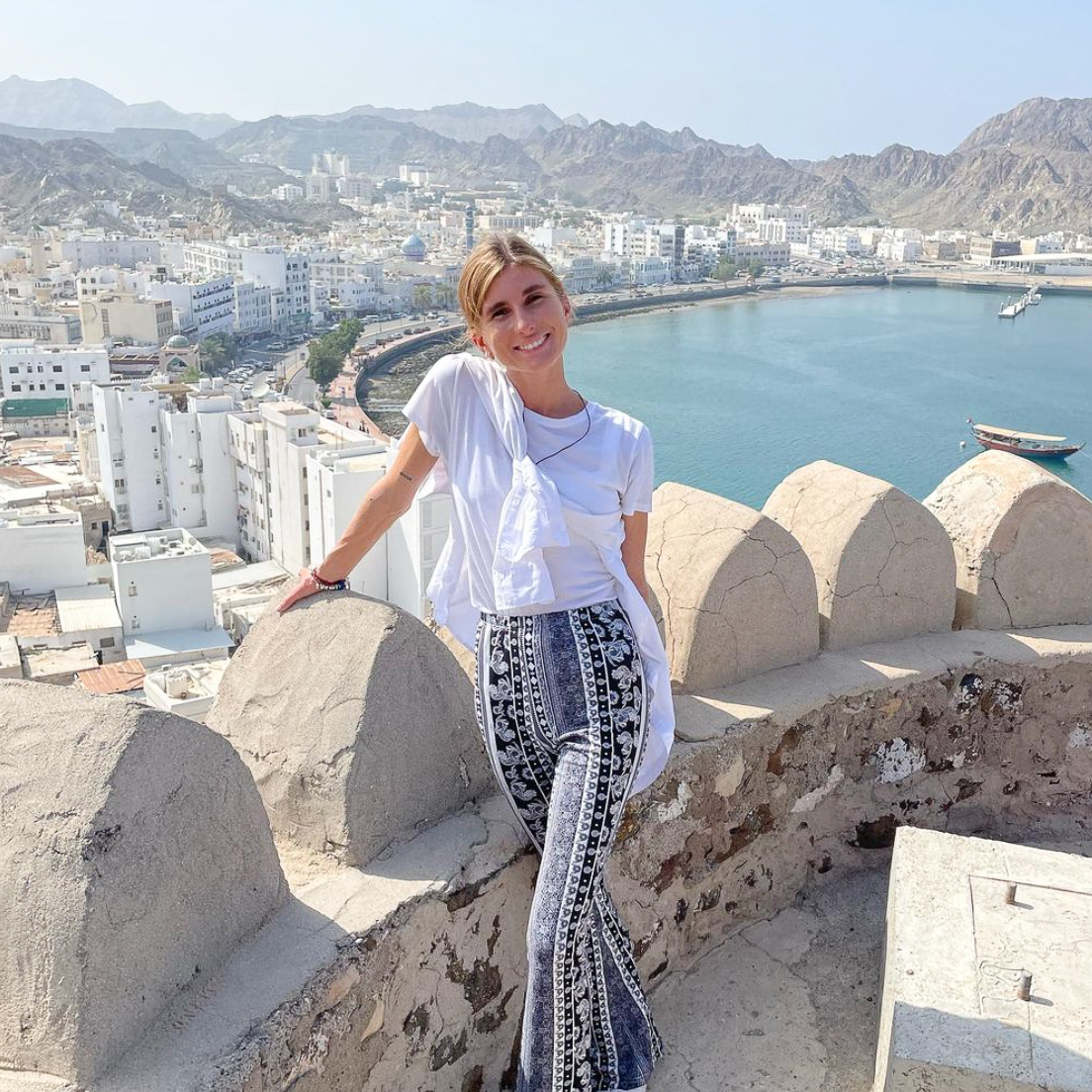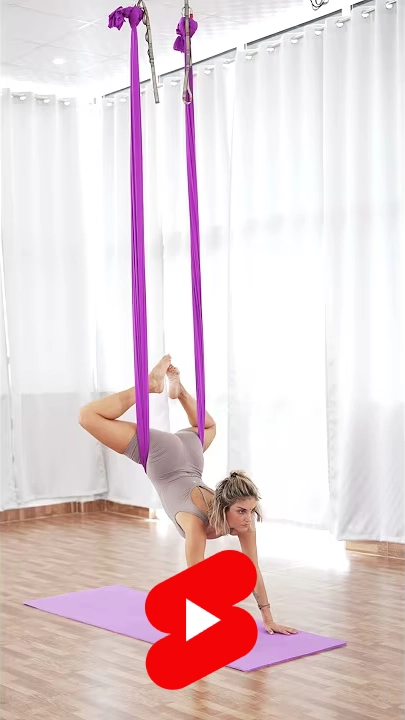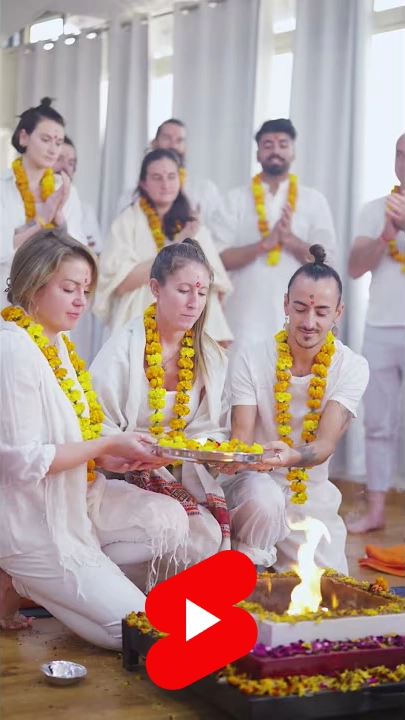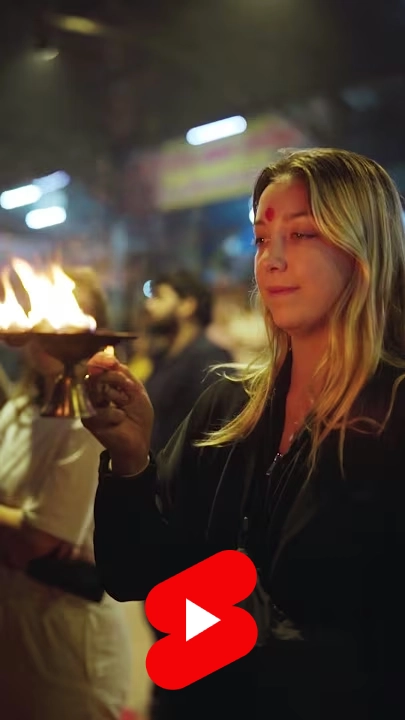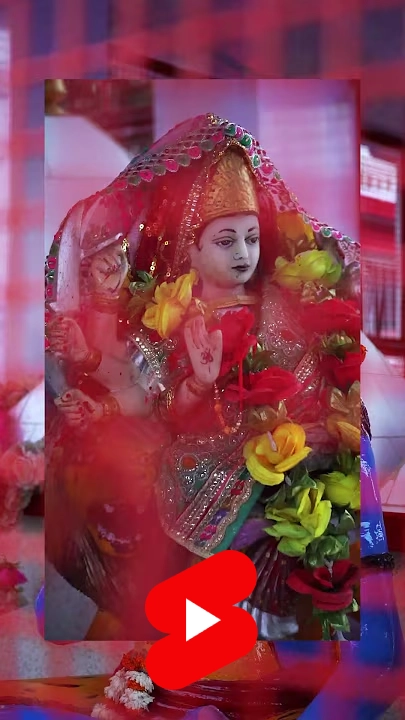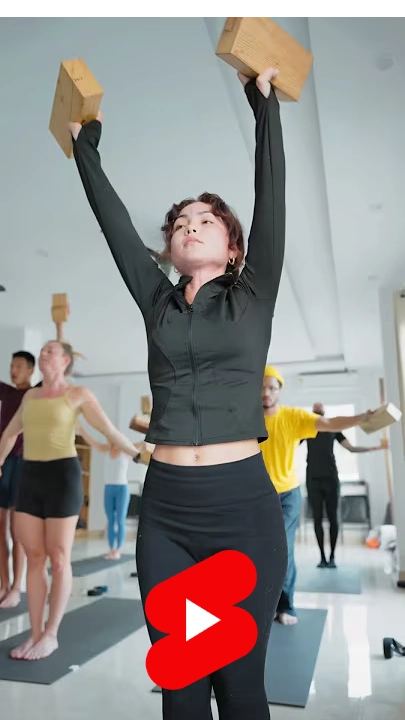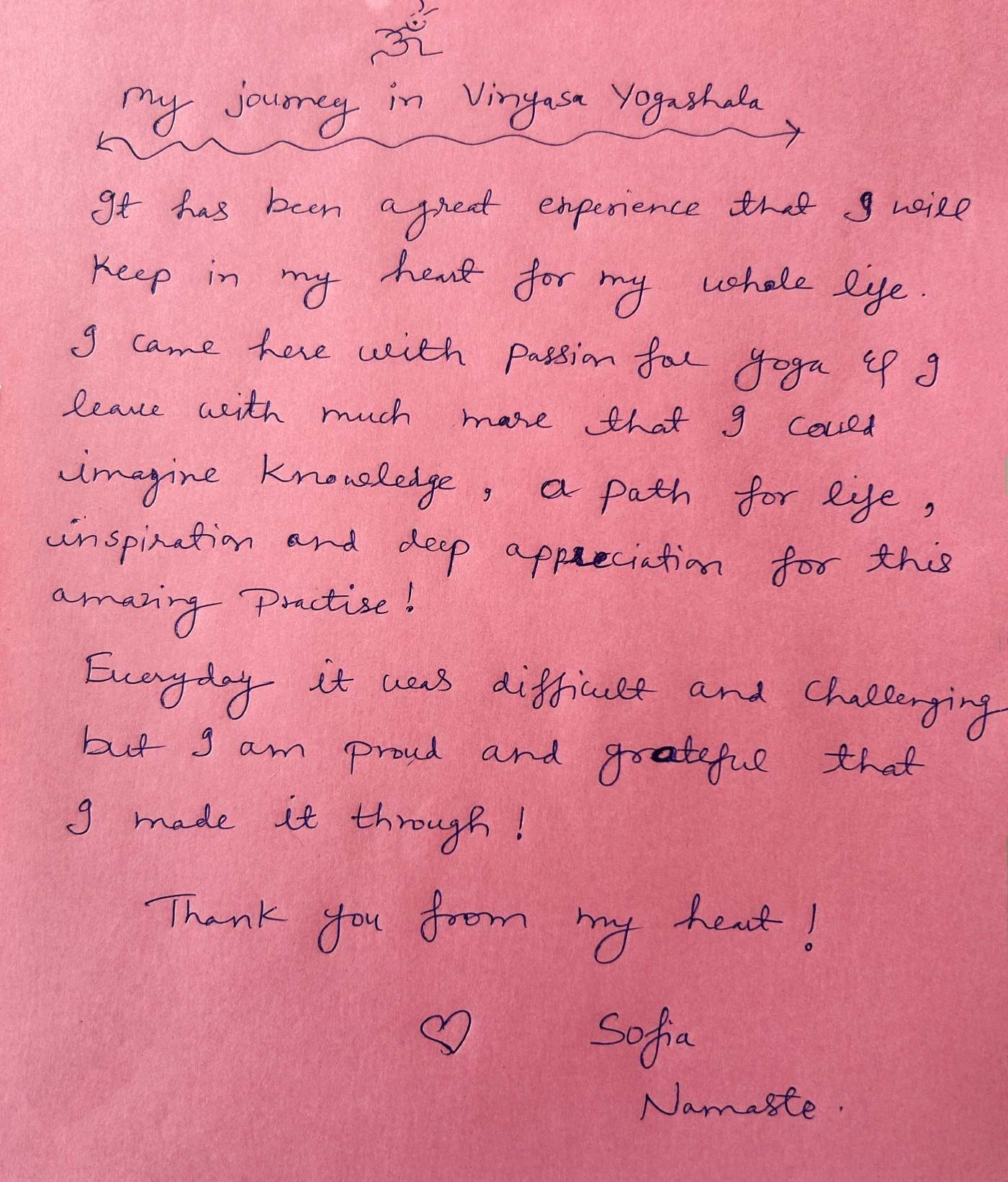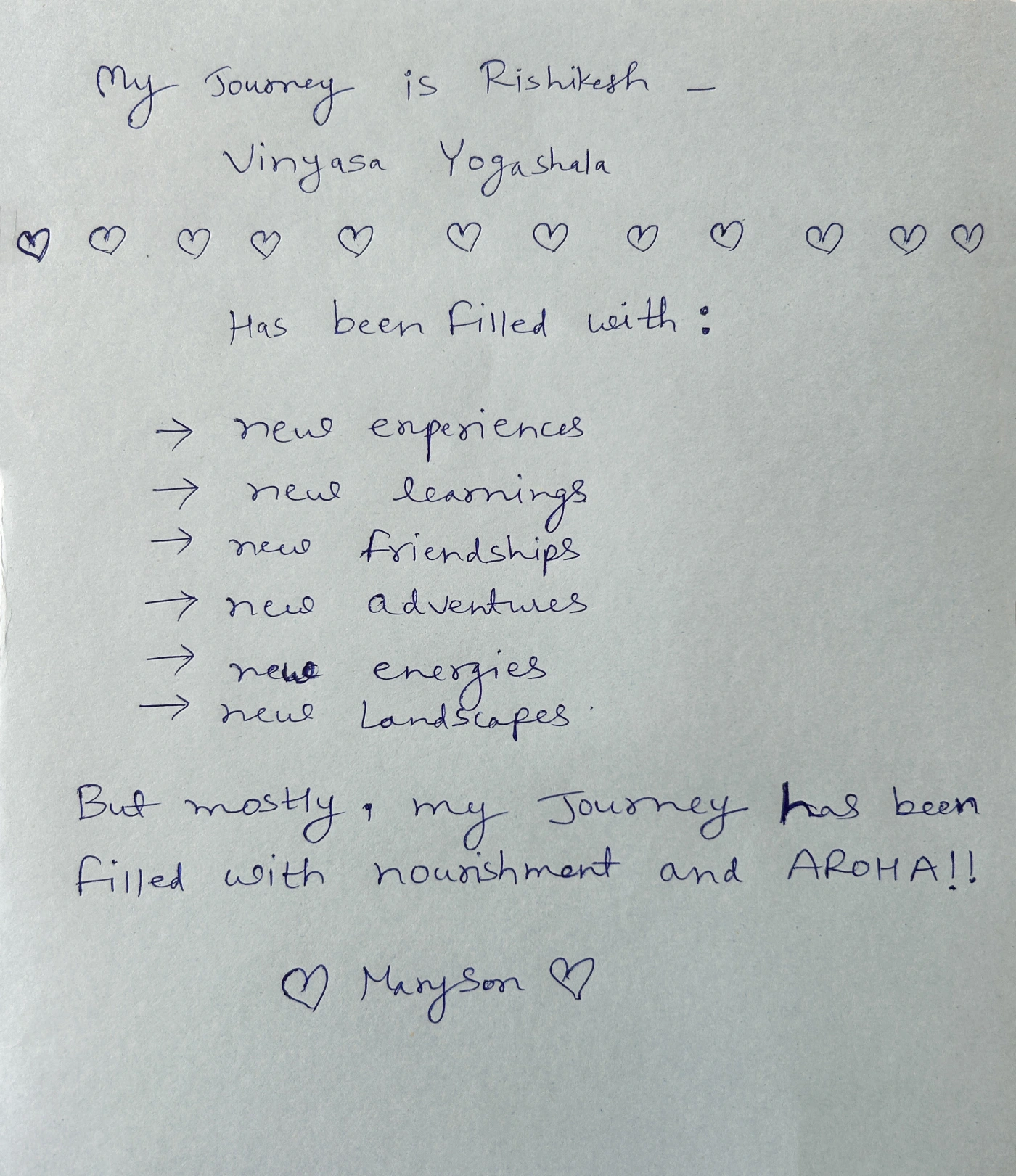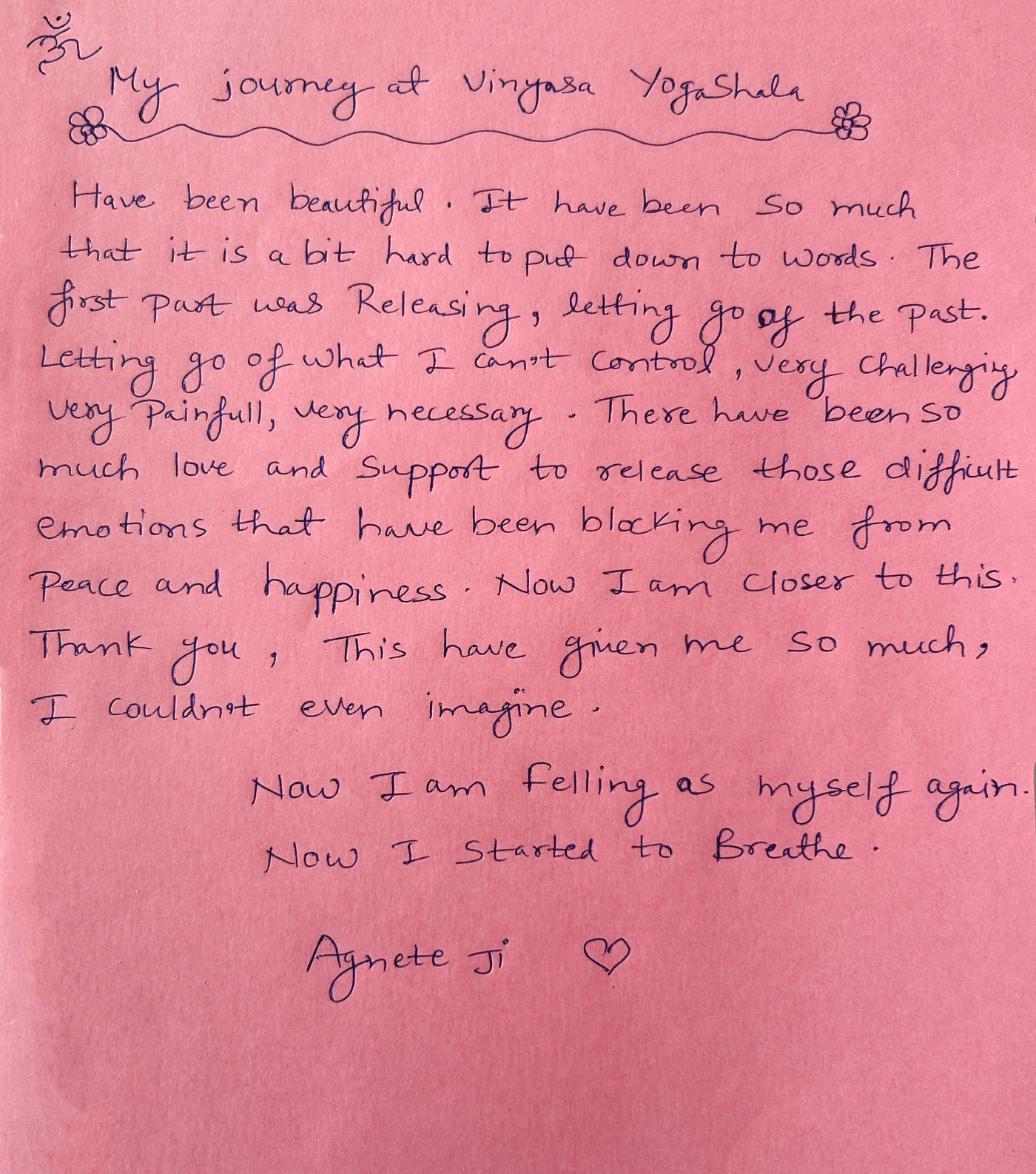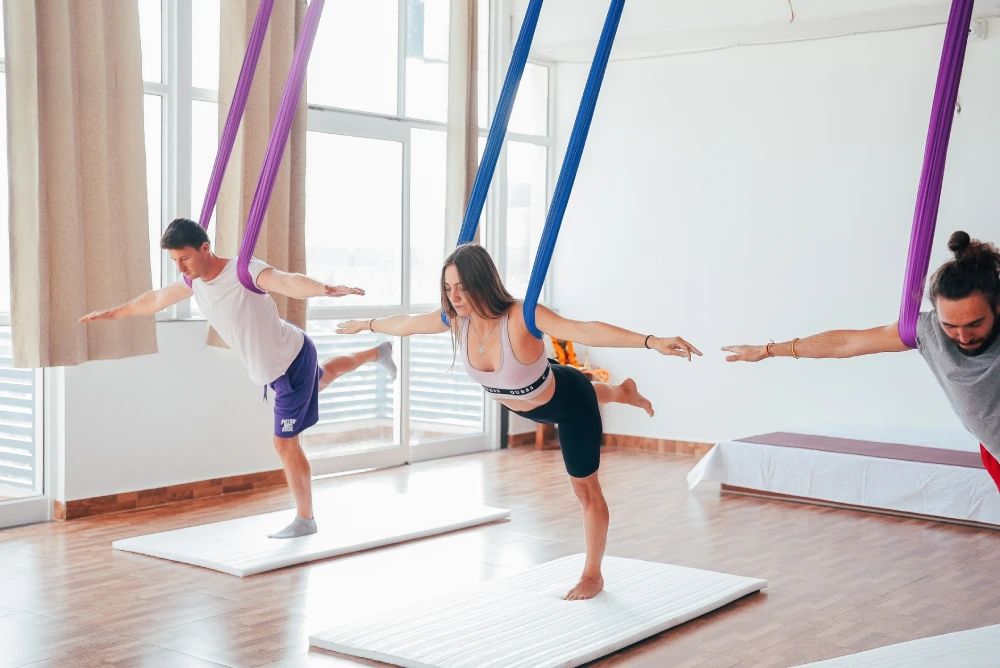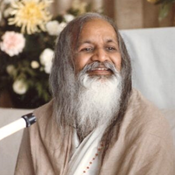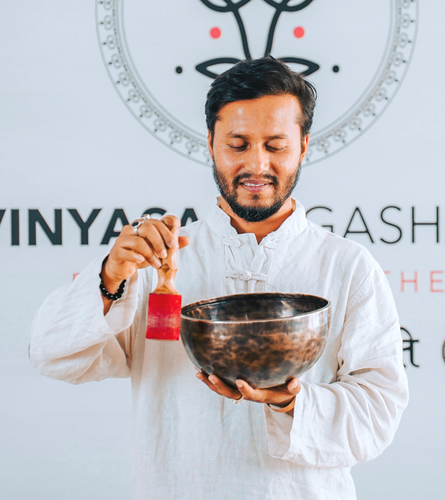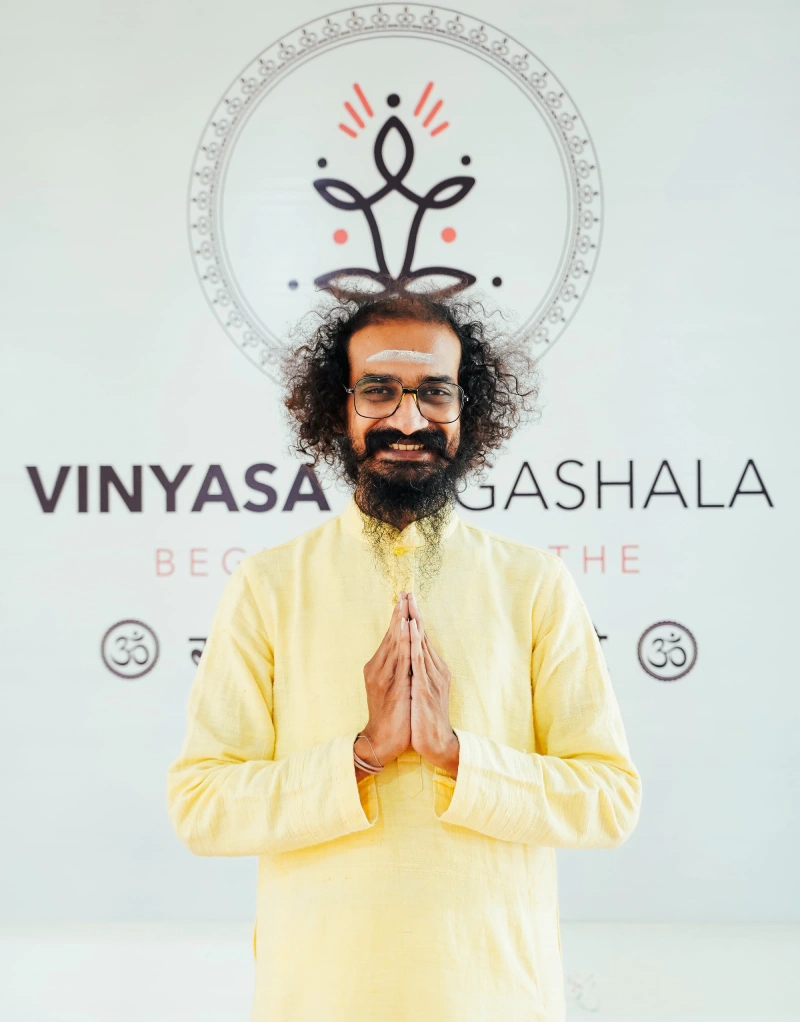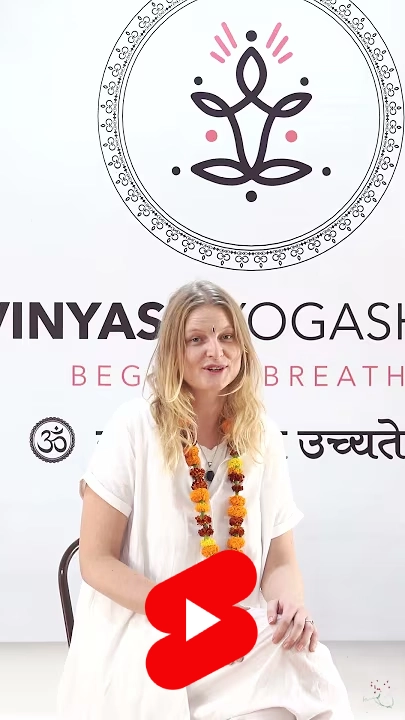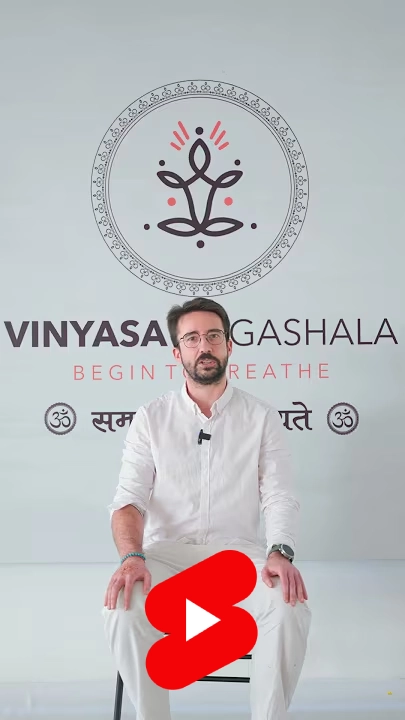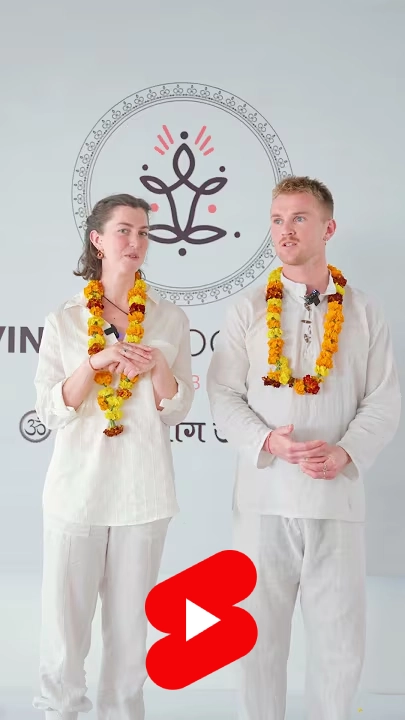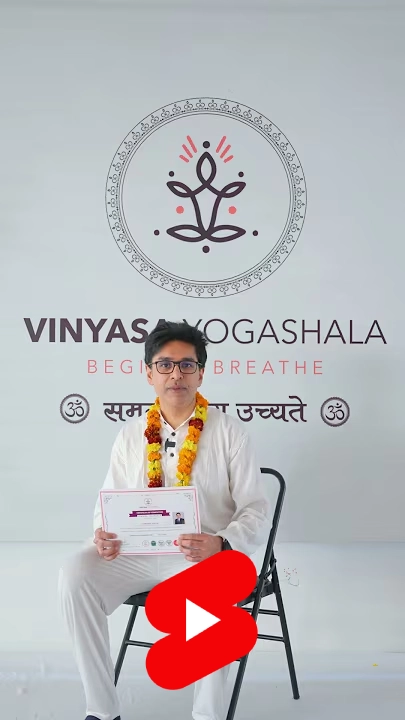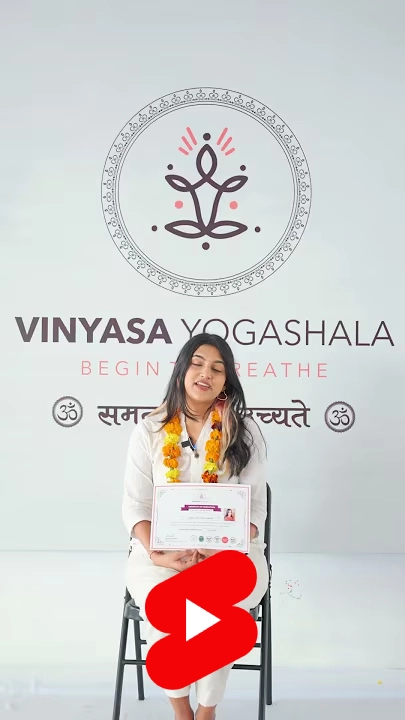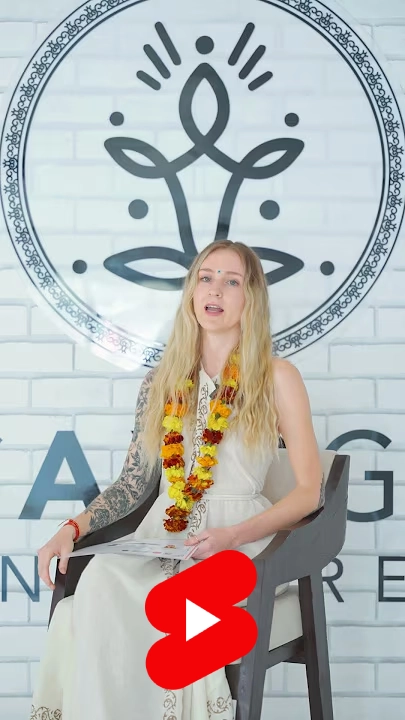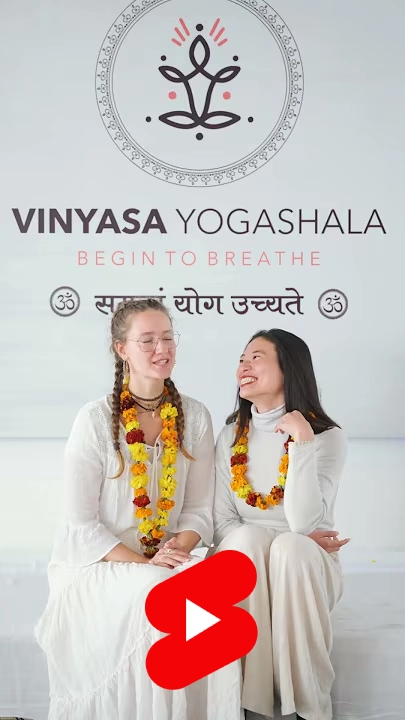We prefer to communicate in English since we receive students from across the globe, so it becomes easier to converse in English. But we also love to teach some important words from the Hindi language since it is widely spoken in Rishikesh, like Namaskara (Hello), Dhanyawaad (Thank you), Swagatam (Welcome), and many more.
Good News!
Our online yoga teacher training is approved by Yoga Alliance to be deemed as a 'regular' training for the year 2024-25. It means you can register as a RYT200 with this online training..
The Best Yoga School In Rishikesh, India
5 Rated Yoga School
Namaste & Welcome to Vinayasa Yogashala
India’s No.1 Yoga School in Rishikesh
Encompasses teachers (International Yoga Asana Champions)
Certified by Yoga Alliance USA
Trusted by more than 13,000+ students worldwide
At Vinyasa Yogashala, our goal is to provide you with the most authentic Yoga experience possible while exploring the spiritual centre and hub of the practice in Rishikesh. We strive to offer a personalised approach for all levels of students, from beginners to advanced. Over the years, we have trained more than 13,000+ students both online and offline, elevating their learning and practice of Yoga to new heights. Our Yoga alliance USA-approved courses cover a range of specialities, including Hatha, Ashtanga Vinyasa, Kundalini, Yin Yoga and more.
We understand what it takes to make a powerful transformation on both physical and spiritual levels. Hence, we go all out to provide our students with the best in class facilities and an environment that allows for complete commitment to the practice of Yoga. You experience deep spiritual growth with our diverse yoga styles and personalised approach. Our traditional teaching methods and connection with our students set us apart from the rest. Our passion for yoga teacher training is evident in our range of courses in Rishikesh, suitable for all levels.
We create an environment for our students to learn and develop their skills, taking them on a journey of Yoga exploration and growth. By joining us at Vinyasa Yogashala, you will be able to experience the beauty of the Himalayan foothills while learning from experienced and knowledgeable teachers in an authentic setting.
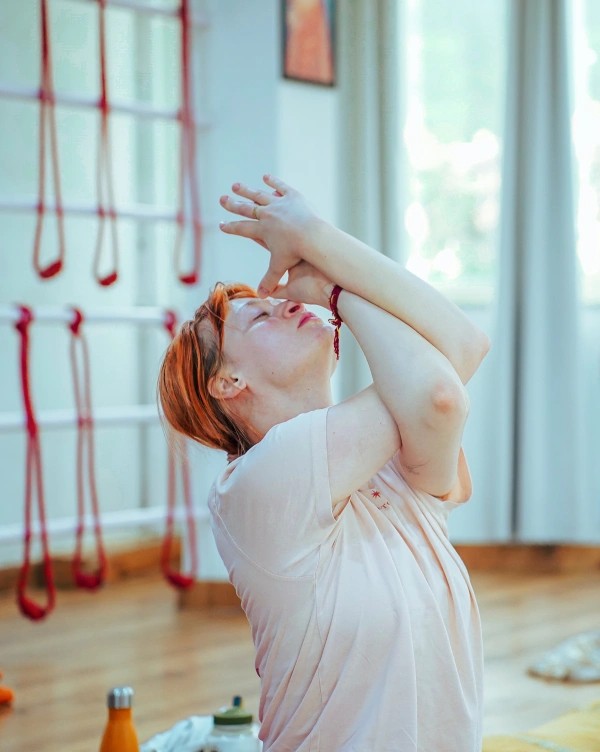
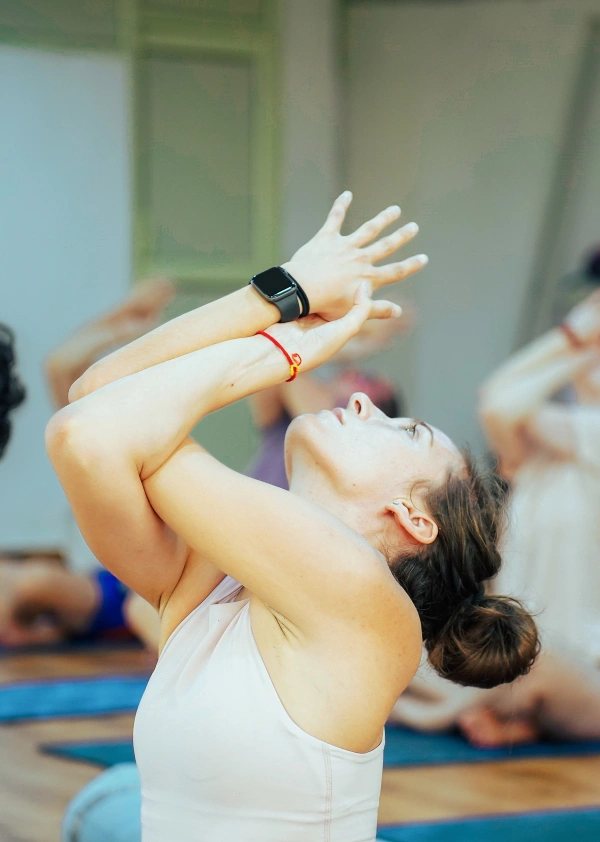
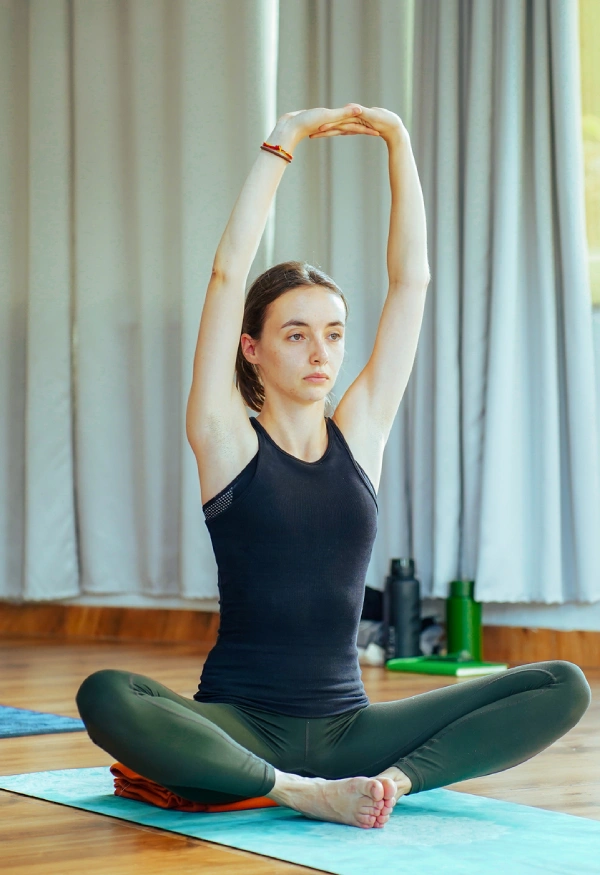

Our master Yoga teachers are passionate and have years of experience in teaching yoga. Their enthusiasm will help you learn the nuances of Asanas, Pranayama, Alignment, Adjustment & Meditation quickly and easily. You can also gain knowledge about anatomy, philosophy, Ayurveda, and other related aspects during your stay with us.
We also offer a range of holistic health programs, including meditation, pranayama, and Ayurveda. Our experienced faculty is dedicated to helping you reach your highest potential, from the moment you join us. We look forward to having you as part of our family! So explore the spiritual heritage and practice of Yoga with us at Vinyasa Yogashala.




Objective of Yoga Teacher Training In Rishikesh India
The Indian culture has always been blessed with the sacred knowledge of yoga. Rishikesh is blessed with this Yogic culture and is a perfect setting to immerse oneself in it. This makes it our duty to spread this blessing thus making the world a healthy, happy and peaceful place to live in.
Our Yoga Teaching provides students with a lot of interactive sessions making Yoga practice easy to relate to. Yoga is the evolution of the mind consciously and practice of Yama, Niyama, Asana, Pranayama, Mantra, Meditation, Mudras, etc. these all are the keys to reach a blissful state and this can be obtained by understanding the concept of self-practice and self-awareness of body-mind.
At the Vinyasa Yogashala Yoga Teacher Training, we blend the traditional forms of yoga with modern explanations. This makes our teaching easy and approachable. This ancient knowledge of yoga reaches humanity by way of the Guru-Disciple tradition. So, we too follow this same tradition brought down by our great sages when we impart our knowledge and experience of yoga to you.
Be it Asana, Pranayama, Meditation or Mantra, the aim is to let the mind consciously move the body and achieve a natural flow. This creates a bridge between the body, mind and breath. Once this physical, mental & spiritual awareness is attained, the breath gets controlled and Energy/Prana-Shakti is channelized. One can now feel and understand the rhythm of life more easily and the delusion of thinking that Body and Mind are two different things is removed, because “the body is mind and mind is body”.
Our objective is to serve humanity, to keep the authenticity of this spiritual practice and to bring health and awareness because we believe in the concept of -:
- sarve bhawantu sukhina means may all be happy.
- sarve santu niramayah means may all be disease-free.
- sarve bhadrani pashyantu means may we see the welfare of all.
- maa kaschit dukha bhaagbhavet means may no one suffer.
This “Mantra” is a pray to the Universe, for the well-being of all.

Rishikesh, India
300 Hour Yoga Teacher Training in Rishikesh
Deepen your practice of Yoga Asanas and Yoga Philosophy at the 300-hour YTTC in Rishikesh. This is an advanced and challenging course where you will learn the deeper aspects of Yoga on a physical, mental, and spiritual level. Our teachers here are well experienced and we work as a team to understand every student’s perspective and to share the knowledge gained from our own experience.

Rishikesh, India
200 Hour Yoga Teacher Training in Rishikesh
The 200 Hour YTTC is a very popular and approachable applied yoga certification course among all the Yogis. This course will guide you from the basics to more advanced levels. Most yoga practitioners who wish to become certified yoga teachers start here. We are happy to share our knowledge and experience with you and welcome you to join us in the eternal journey of yoga. “Yoga is 1% theory and 99% practice” - K. Pattabhi Jois

Rishikesh, India
100 Hour Yoga Teacher Training in Rishikesh
Our Vinyasa Yogashala also has a 100-hour teacher training segment or pre-teacher training course for explorers in search of a glimpse of what it is to be a yoga teacher. This is a short course that is mostly opted for by beginner students with limited time. We create space for you to follow your interest in the ancient ways of the yogis. You will be able to explore new science-based dimensions of the timeless Yoga practice.
Ashish Ji, The Founder Of Vinyasa Yogashala,Rishikesh
His Philosophy on yoga teaches us beyond just physical well-being; it is more about unlocking the power of our subconscious mind. It is an exploration of our inner self that seeks to bring us closer to understanding our true nature. He states, “Yoga creates a rhythm between mind and body that leads to an understanding of our true self”. Guru Ji has dedicated his life to the practice of yoga and its philosophy, combining ancient teachings with modern-day techniques and tools to create an inclusive environment for all.

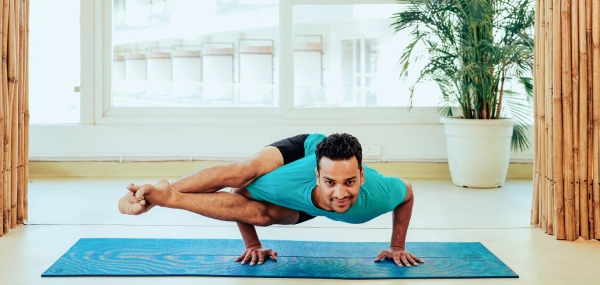

You are the greatest form of energy & that energy travels through several mediums (situations) before it takes the shape of your desired reality. No matter how difficult life is, you have the power to create your own destiny. Yoga is one way to achieve your desired reality as it taps into the source of your own inner power & awakens the yogi in you.
“Vesh, bhusha, aur bol se pare hai ek yogi, yogi ki asli pehchaan uski shakti se hoti hai.
Meaning: A yogi is beyond his looks and overall appearance since the real identity of a yogi comes from his power.”
Guru Ashish Ji
Founder of Vinyasa Yogshala, Rishikesh
Awards & Honours

Uttarakhand State Yoga Association Championship Award 2012

Yoga Association Championship Award 2013

World Federation of Yoga & Culture Award 2015

International Yoga Championship Award
Lorem ipsum dolor sit amet
Lorem ipsum dolor sit amet, consectetur adipiscing elit. Aliquam iaculis nibh id eros finibus, non consequat lectus mattis. Aenean ac risus in sapien cursus tincidunt. Fusce ac nibh sit amet magna rhoncus ullamcorper id ut nisi. Ut diam nunc, congue sed facilisis at, condimentum sed nisi.
Lorem ipsum dolor sit amet, consectetur adipiscing elit. Aliquam iaculis nibh id eros finibus, non consequat lectus mattis. Aenean ac risus in sapien cursus tincidunt.
Lorem ipsum dolor sit amet, consectetur adipiscing elit. Aliquam iaculis nibh id eros finibus, non consequat lectus mattis. Aenean ac risus in sapien cursus tincidunt.
Overview of the Yoga Teacher Training in Rishikesh
The yogic journey starts with Hawan (fire ceremony) and Mantra Chanting to pray the Universe and Mother Earth to purify the energy of our surroundings. We pray to remember our Ancestors and Gurus asking for the blessing and guidance on the Yogic path.
Hawana
Fire is the sign of transformation 🕉.
"Fire ritual", in Sanskrit is referred to as "Hawan" This is conducted in the beginning of the Teacher Training Programme as an opening ceremony. Here, we perform a ceremony asking for blessings of the Universe and pray for the cosmos to guide us, lead us to the light of its knowledge. In this ritual, we offer various medicated and spiritual herbs and ghee into the divine fire to purify the surrounding environment and to enhance the energy/Aura of the place.
Now, what will you learn in the 200 Hour Yoga Teacher Training Course in Rishikesh?
Asana
In Patanjali Yogasutra, “Asanas” is defined as
“sthira_sukham_asanam” – “Steady_Comfortable_Posture”
(The Asana is a state when the body and mind are Stable, Comfortable, and Relaxed). Here at the Vinyasa Yogashala, we follow the traditional practice of Hatha Yoga, going hand in hand with the modern yoga style, Vinyasa Flow Yoga, for the practitioner to understand the balancing of the energy, synchronization, and movement from one Asana to another. This blend of traditional and modern yoga helps deepen the practice at a gross and subtle level.
Apart from Hatha yoga and Vinyasa yoga classes, we also have classes for Adjustment Alignment to understand the asanas, their alignment, and how to learn modifications that deepen the practice.
Our Vinyasa Flow teachers show you how to energize the body through movement and breath, and how to stretch the muscles and clean the body internally.
Our Hatha yoga teacher is an expert on alignment and will demonstrate how to safely teach your students asanas without risk of pain or injury.
Pranayama
Pranayama is the practice of increasing the “Vital Energy” “Lifeforce which is in constant motion through Breathing” well. Breathing is not just the function of the Lungs and Heart but is also related to one’s state of mind.
Today when short breathing is very common in the modern world, Respiratory problems like Asthma, Blood Pressure, and Psychosomatic problem like Stress, Anxiety, Diabetes, Hypertension seem to be increasing by the day to counter these problems. Pranayama is the solution here. We need to understand the concept of Pranayama because it is the bridge between mind and body. Here, you learn a number of breathing techniques like Diaphragmatic breathing, Chest breathing, Alternate Nostril breathing, etc. Here, good control over your breathing can help you practice for longer, with much stability and less tiredness.
Yogic Anatomy and Physiology
“Chiti jal pawak gangan sameera” - “Earth Water Fire Ether Air”
“Panchrachit ati adham sareera” - “Five element constitute Body”
According to the Ayurveda, these five great elements constitute the body and we get mixed up in these elements when we die. Yogic Anatomy and Physiology teaches the concept of the human body, its composition, its dosha’s (vata, pitta & kapha) according to Ayurveda as well as the present medical representations of our body, its movements, limitation, the working of different systems, etc. This will in turn create a sense of awareness of the body.
In our yogic Anatomy, the structural anatomy is discussed-:
- Bones, Joints, Anatomical planes and Movement of the body.
- In Yogic Physiology, we learn about how different systems like Digestive system, Respiratory system, Central Nervous system, etc work. We also get the whole picture of these systems to correlate various yoga practices like asana, Pranayama, Shatkarma, Mudra, Bandha, Meditation, etc to the different systems of the body.
Yogic Philosophy
“Yoga stops the fluctuation of mind”.
It is the second verse from Patanjali Yoga Sutra, which means Yoga bring calmness to the mind from unnecessary thoughts;
Philosophy is the fundamental aspect of Yoga, without which it is merely an exercise of balancing and stretching. In Philosophy we learn the physical, mental and spiritual aspects of yoga. The ultimate aim of all yoga practices is Moksha/Nirvana (Liberation) and to understand this concept, we first need to learn the origin of Yogic, what are Vedas? What does Shrimad Bhagwat Gita explain about life? What is Chitta? What Are Attachments? Many more questions get explained in a yoga philosophy class so you get the complete benefit from Gross to subtle level, from physical-mental to spiritual level.
Mantra
“Chanting Mantra shield from all trouble”.
The Sanskrit word ‘Mantra’ is the combination of two words ‘Man’ and ‘Tra’, where ‘Man’ means feelings/inner voice/mind/thoughts/perception and ‘rarefies to instrument/to tune. So in simple words, we understand Mantra as strong/powerful/sacred words that when chanted right, can tune/harmonize the body and mind. In Vinyasa Yogashala Yoga Teaching every yoga class begins with a mantra to balance the energy. Here you learn about Mantras, its types, how to recite them? What is a Mantra for Chakras? What is the Discipline for Mantra chanting?
Teaching Methodology
Finally, we include a course on teaching methodology to refine your teaching skills, where we talk about how you can develop your “teaching voice” and also learn to prepare classes, improve your confidence and achieve the right qualities to be a teacher.
It is very important for a yoga teacher to efficiently perform the different practical applications of class planning and preparation. At Vinyasa Yogashala, our students learn how to create positive and peaceful class environments for an enjoyable and transformative experience. These include:
- Positive & conscious communication.
- Friendship and trust.
- Time management
- Qualities of a teacher
- Principles of demonstrating, observation, assisting, correcting.
- Use of voice in class
- Mental & emotional preparation for teaching.
- Class preparation
- Step by step class structure planning.
Meditation
Our busy routine can get us to forget to spend time with ourselves. Meditation which also means reflection is one way to check your mental as well as your spiritual health. It trains your mind to be calm and keep you from being overjoyed or too emotional. This is one of the most powerful techniques of Yoga to explore different levels of awareness. Many great yogis like Lord Buddha, Swami Vivekananda, Swami Sivananda are great practitioners of Meditation. How to sit for Meditation? Sitting in Lotus pose, keeping hand in Gyan Mudra, with closed eyes and relaxing the mind. These are some of the ways to Meditate, where the steadiness of the body induces the steadiness of mind, bringing awareness of the present and creating mindfulness.
Detoxification
In our Yoga Teacher Training In Rishikesh, we teach Shatkarma (yogic cleansing method) and Yogic diet that help detoxify the body. Why is detoxification important? Well, if your body does not eliminate toxins, these can either enter into the cells through the digestive or blood circulatory systems to cause problems. When you detox, you get to increase the age of your internal organs, build immunity and tackle skin problems more naturally without chemicals/cosmetics and many more.
Best Yoga School in Rishikesh India
Rishikesh is the place of spiritually dwelling….
Famous for the natural scenery, Rishikesh contains the essence of spirituality and tranquillity. The place is surrounded by the Himalayan mountain range dissected by the serenity of the river Ganges. According to the traditional yogic texts, this creates the perfect atmosphere for the immersive practice of ancient and timeless yoga.
Rishikesh, a sacred place for yoga practitioners down through the ages, has been the destiny of sages who came to the Himalayas in their search for eternal truth by achieving Moksha, Nirvana, and Liberation. The vibrations created by countless yogis bless the maintains, rivers, and yoga halls nestled here to achieve the main aim and objective of Yoga. It's like having a strong wind pushing you towards the goal, effortlessly.
Influenced by those sages, who introduced the Yoga practices to the people of Rishikesh, our Yoga school Vinyasa Yogashala today spreads this Yoga Teaching through Guru (Teacher) – Shishya (Student) tradition.

The primary focus of Vinyasa Yogashala is the practice of Vinyasa Yoga & Hatha Yoga. Additional training is provided in Hatha Yoga as it is an essential foundation for the balance of the Nadis (energy channels). In compliance with certification requirements, our Vinyasa training is supplemented with studies in Anatomy & Physiology of Yoga, Adjustment & Alignment of various Asanas, Pranayama the yogi way to breathe, Philosophy of traditional Yoga, Meditation understanding, Ayurveda learning & Mantra chanting.
Our main teachers being ‘International Yoga asana champions’, they are truly the best teachers of Rishikesh and around the world. They encourage their students to become as good as they can possibly be! They take your practice to the next level. Vinyasa Yogashala helps students in all ways, providing complete attention by setting classes in small groups. In this way, students receive all the knowledge, skills and experience from their teachers to achieve their personal goals.
This is a Yoga School where one can understand the physical, mental and spiritual aspects of yoga, as a practice of disciplining the body, mind and soul. It shows you how to have a peaceful and happy life through regular practice of Yoga.
In Vinyasa Yogashala's Yoga Teacher Training in Rishikesh, India Yoga courses, you don’t just learn to be a yoga teacher, but also cultivate a spiritual practice which lasts a lifetime.
Lorem ipsum dolor sit amet
Lorem ipsum dolor sit amet, consectetur adipiscing elit. Aliquam iaculis nibh id eros finibus, non consequat lectus mattis. Aenean ac risus in sapien cursus tincidunt. Fusce ac nibh sit amet magna rhoncus ullamcorper id ut nisi. Ut diam nunc, congue sed facilisis at, condimentum sed nisi.
Lorem ipsum dolor sit amet, consectetur adipiscing elit. Aliquam iaculis nibh id eros finibus, non consequat lectus mattis. Aenean ac risus in sapien cursus tincidunt.
Lorem ipsum dolor sit amet, consectetur adipiscing elit. Aliquam iaculis nibh id eros finibus, non consequat lectus mattis. Aenean ac risus in sapien cursus tincidunt.
Yoga Community of Vinyasa Yogashala



Join Our
200 Hour Yoga TTC In Ubud, Bali
Book Before Sep 30th To Get 10% Discount!!!
Facilities You Enjoy At the Yoga School in Rishikesh, India
About Transportation
We arrange, for students without a direct flight to Dehradun, their transportation from Delhi. If a student wishes to arrive by taxi/cab arranged by them, we send a Google map location and stay in contact with them till they reach Vinyasa yogashala safely.

About library
Our Vinyasa Yogashala library is well stocked with beautiful books that are meant to assist you in learning more. This helps you deepen your practice. We have various books on Asanas, Pranyama, Meditation, Yoga Philosophy, Yoga Anatomy, Mantra, and also a few novels and much more by well-known spiritual gurus, scholars and writers.

Excursions
This course also allows you to enjoy one full day and one half day off each week to visit the many local attractions. You can go white water rafting in the Ganges, enjoy a trip to the beautiful Himalayan Mountains.
Did you know? It is said that a single dip in the Ganges cleanses your soul of all sins.

About Food
At Vinyasa Yogashala we provide a balanced diet of Satvik and Rajsik food, which help you attain the balance within the body and mind. We serve three nutritious vegetarian meals of fresh and seasonal ingredients from Rishikesh. We invest a lot of thought, care, and (of course) love into your food to ensure that you will feel re-energized, hydrated, and strenghtened throughout the day.
We believe that a peaceful and hygienic environment is important for learning. Hence, all the rooms at Vinyasa Yogashala are bright, spacious and equipped with modern facilities like Wi-Fi and hot showers.
Fresh and organic vegetarian food is served three times a day along with ayurvedic drinks. The wholesome food, daily Yoga routine, presence of the powerful Himalayan Mountains and Ganges River and the companionship of your classmates all help you to form a discipline that won’t just make you the Best Yoga Teacher, but also bring you closer to spiritual satisfaction.
Did you know? According to Ayurveda, what you eat, the places you live, and even the colours you are attracted to play an important role in your health.

About Reception
Our Reception is hosted by Ravi ji, who ensures that you feel comfortable during your entire stay with us, a 24/7 security camera monitoring system ensures your safety. If at all you require any kind of information regarding the Rishikesh market, places to visit or even some basic medicines, Ravi and we are happy to help you!
Trusted Yoga Alliance Registered School
Certification for International Yoga Instructor
Vinyasa Yogashala in Rishikesh offers a comprehensive certification for becoming an International Yoga Instructor for 100-hour, 200-hour, 300-hour, 500-hour YTT courses along with short courses like Yin Yoga TTC, Prenatal YTTC, Sound Healing, Reiki Healing, Ayurveda and Aerial Yoga YTTC. Yoga Alliance, USA, recognizes us as we ensure higher and better education and training standards in Yoga.
Graduates from our Yoga School receive this certification, which marks their credibility and makes them eligible to teach worldwide. It opens great career opportunities for students and also fosters a global community of well-trained yoga practitioners who are appreciated for their work.
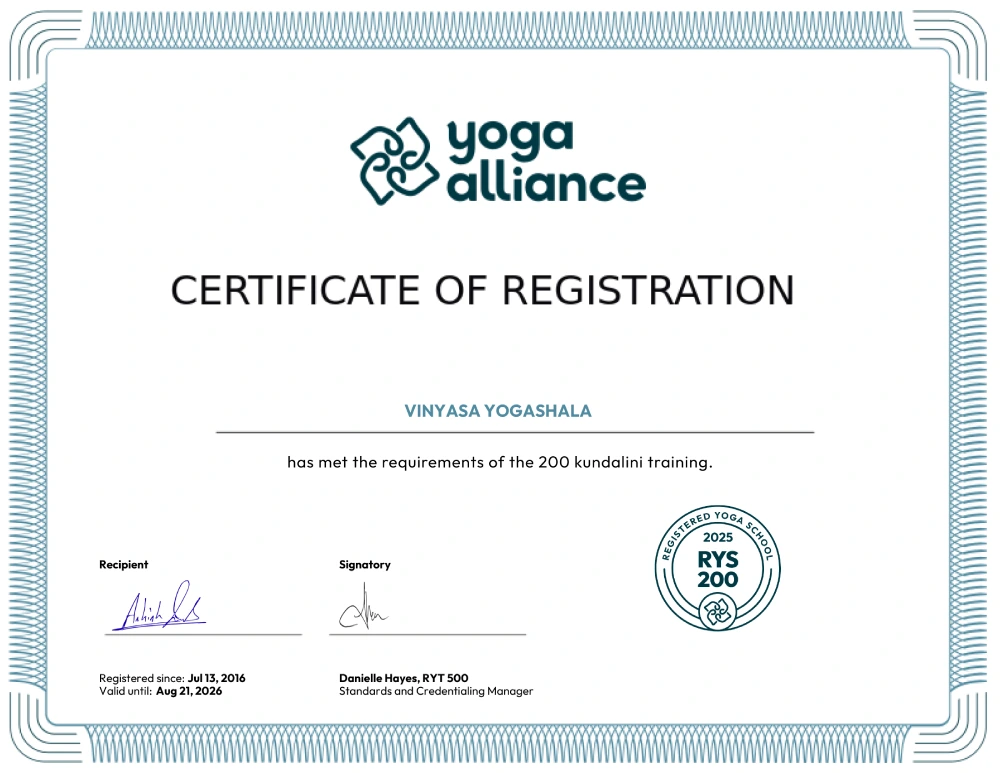


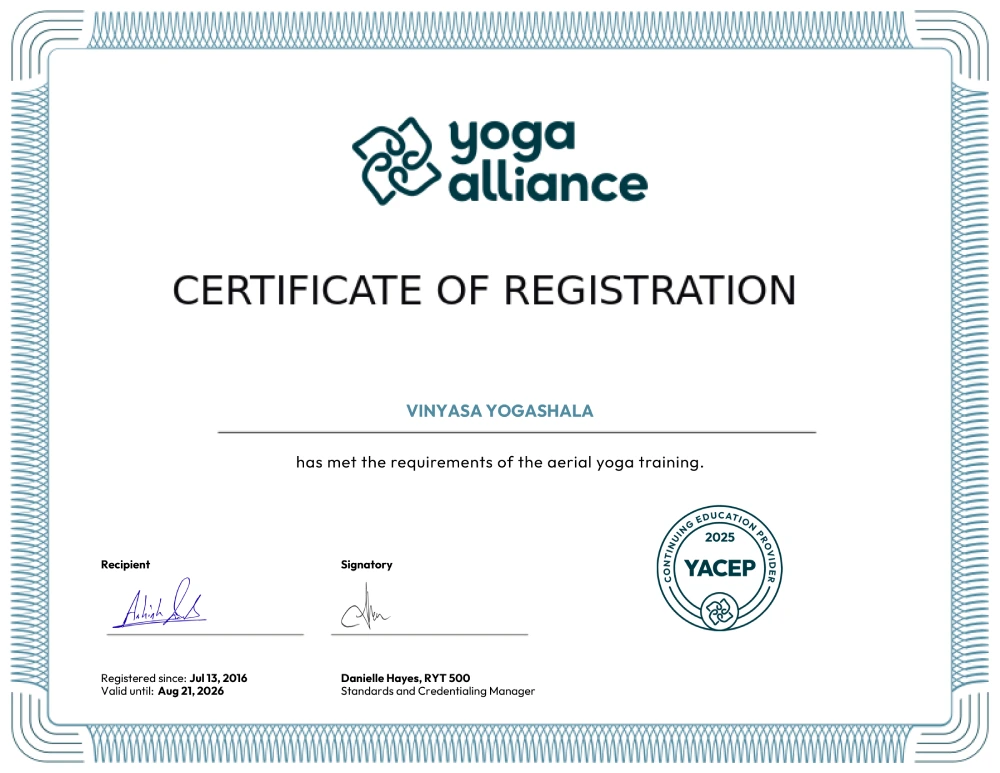

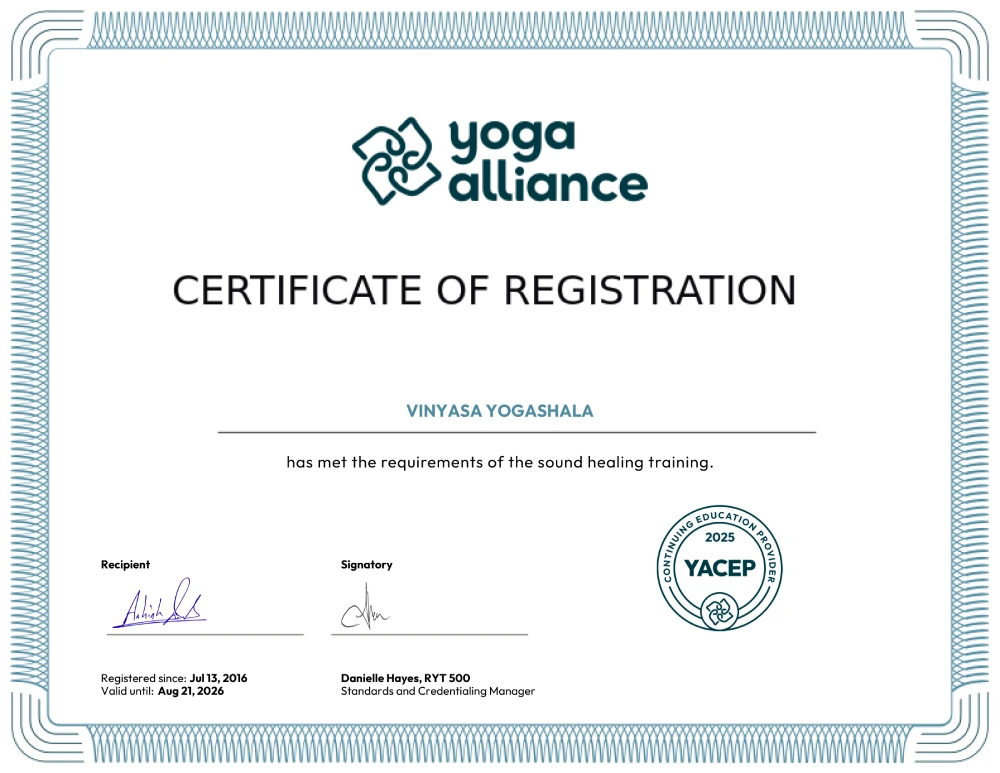
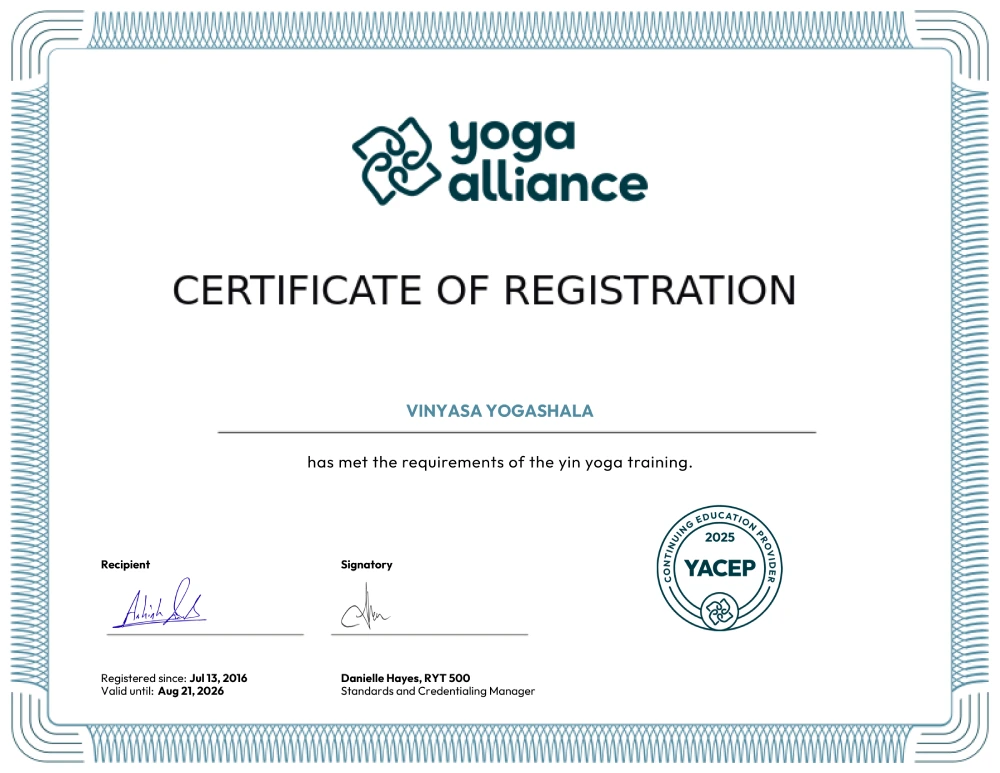
Short & Sweet Videos - Yoga Moments in Motion
Short-Term Wellness Courses in Rishikesh
The 200, 300, and 500-hour YTT Courses are the foundation of Yoga, but did you know that apart from these courses, there are special short-courses that are also recommendable to enhance your practice and help you explore your yogic voyage with more curiosity and knowledge? From the Aerial Yoga Teacher Training course, Pre-Natal Yoga TTC, Yin-Yoga Teacher Training, Reiki Healing, Ayurveda to Sound Healing TTC, you master different courses with professional teachers trained with high-level skills to help students learn the best in the world.
Depending on the course length, these courses have individual benefits with respective implementations and levels, such as Level 1, Level 2, and Level 3. Each course has a lot to offer, as the Aerial Yoga Course gives you a flying yoga experience that is unique & relaxing; the Pre Natal Yoga TTC is highly recommended to those women who are preparing for labour, Yin-Yoga improves emotional balance and aligns physical, mental and emotional health of an individual whereas the Sound Healing YTTC helps in reducing stress, and focus on core body relaxation. Upon completion, you get a sense of satisfaction and relief that builds confidence and empowers a student to accomplish even greater heights in this field. These courses support self-growth and encourage one to lead a healthy, happy & holistic life.
If you're interested in experiencing these short courses in Rishikesh, Vinyasa Yogashala offers remarkable retreats for beginner and intermediate students. You can book a course, apply for an extended-duration visa, and focus on one course at a time. We recommend completing your foundational courses and then choosing from these special courses to continue your practice. You can book your course in advance or on the spot, whichever is more convenient. Please discuss accommodation and food during your extended course with us in advance.
See What Our Students Say About Us!
See What Our Students Say About Vinyasa Yogashala!
Our Spritual Yoga Gurus
Best Yoga Teachers Rishikesh India
All our teachers and gurus are experienced instructors who are well trained and well-versed in all things about yoga – ensuring that all of our graduates are fully equipped to be successful. All teachers here have a Masters in Yogic Science as well as certificates from the Yoga Alliance.
Did you know? The core teachers at Vinyasa Yogashala are international asana champions!
Testimonials/Reviews - What Do Students Say About Us?
We Know This Is A Big Step For You
So we do everything to make this the best investment of your life

5.0/5 Stars
Trip Advisor Testimonials

4.9/5 Stars
Google Maps Reviews

4.9/5 Stars
Yoga Alliance Verified Reviews

4.9/5 Stars
Trustpilot Verified Reviews
FAQs - Yoga School in Rishikesh India
We provide books, manuals, and other essential study materials, including the cost you pay during the course. We don't charge anything extra.
It depends on the mode of transportation and the place you are coming from. Although we have provided the complete address on the website, you can reach us here by bus, train, cab, and through flight to Dehradun Airport. Rishikesh is 1.30 hours away from Dehradun by taxi or bus.
Yes, we take every necessary measure for our students regarding their health. We have connections with local doctors who are available for immediate assistance, along with a medicare team available 24*7 for our students and teachers.
You can carry all types of gadgets except those that are harmful or a threat to anyone. Mobile phones, laptops, and tabs can be used only during the classes once and if asked by the school's teachers.
There are usually 14-17 students in a single batch of a particular course.
You can apply for a tourist visa. As your chosen school for YTTC, it is our responsibility to guide and help you with visa assistance, but we aren't fully responsible for the same. We are limited to verbal assistance only. But if you apply for an e-tourist visa, that's even better and easy. Apply for a minimum of 30 days of tourist visa if you are applying for individual courses like 200 hour YTTC or 300 hour YTTC, but if you are applying for 500 hour YTTC, you should apply for a minimum of 60 days.
No, we provide a complete yoga kit; all you have to bring along is the passion for learning & dedication toward the course.
100 Hour Yoga Teacher Training Course, 200 Hour Yoga Teacher Training Course, 300 Hour Yoga TTC, 500 Hour Yoga TTC, Yin-Yang Yoga, Prenatal and Postnatal YTTC, Aerial Yoga, and other Yoga Retreats.
Each training program is designed according to the structure and respected process. We constantly inform students about their classes, timings, facilities available, and everything covered under the course during that time. It is our duty to maintain transparency and let our students feel more confident in their learning journey.
Your Yogashala Is Giving Back!
Vinyasa Yogashala Is Proud To Associate With GiveIndia's Mission: "Every Girl In School". For Every Course You Purchase, You Are Contributing To A Girl Child’s Education In India. We Are Proud To Associate With The Vision And Ideology Of Give India And Pledge To Make A Difference With Your Support.

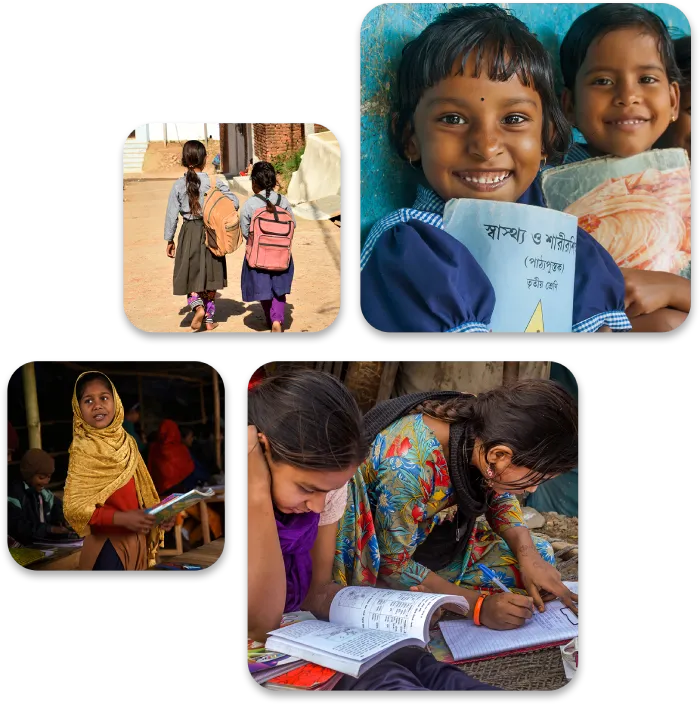
Why Students Love Us
Don't just take our word for it. Trustpilot is an independent website where consumers can post unbiased reviews about companies.Student's Short Review - Student's Experience With Us
 Enroll Now
Enroll Now
